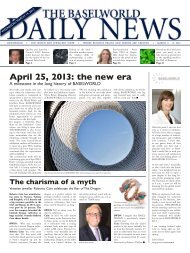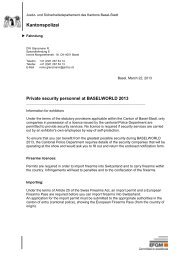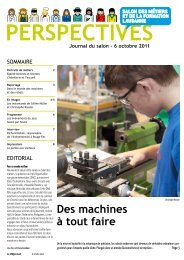WatchTime - August 2012
WatchTime - August 2012
WatchTime - August 2012
Create successful ePaper yourself
Turn your PDF publications into a flip-book with our unique Google optimized e-Paper software.
turns to zero, the complexly shaped tip of the minutes-counter<br />
lever dips into this indentation so that the hand can neither become<br />
deformed nor slip on its staff. After a little leftward swing,<br />
the hand returns to the 12 o’clock position without the slightest<br />
wagging. Also new: the balance oscillates at 4 hertz (28,800 vph)<br />
instead of the previous rate of 2.5 hertz (18,000 vph).<br />
Patek Philippe is acknowledged as a pioneer in the development<br />
of perpetual calendars for wristwatches. Its expertise is evident<br />
in Reference 5270, the chronograph with perpetual calendar<br />
introduced in 2011. Caliber CH 29-535 PS Q uses the CH<br />
29-535 PS as a base, with the addition of a perpetual calendar.<br />
This, too, is a new construction. The calendar unit wasn’t simply<br />
installed on top as a module; it required modifications in the<br />
chronograph. Patek Philippe’s technicians repositioned both the<br />
subdial for the seconds and the elapsed-minutes counter slightly<br />
downward toward the 6 to make room for larger disks indicating<br />
the day and the month. They also equipped this 1.65-mmthick<br />
mechanism with a rotating cam that “tells” the calendar’s<br />
mechanism how long each month should be in each ordinary<br />
year and each leap year until the year 2100. The moon-phase indicator<br />
underneath the little date display does its job with admirable<br />
precision, too: its error will amount to one full day’s deviation<br />
only after 122 years and 45 days. Should this display require<br />
adjustment before then, the user need only press the little<br />
button on the side of the watch’s case.<br />
WITH REFERENCE 5204, Patek Philippe went a step further<br />
and added a split-seconds function to its CH 29-535 PS Q<br />
movement, thus rounding out its collection of in-house chronograph<br />
calibers.<br />
Two unconventional details in its construction distinguish<br />
this newcomer from the older rattrapante caliber CH 27-70/150<br />
that Patek Philippe used in Reference 5004. The first difference<br />
has to do with the isolator. Patek Philippe’s design engineers analyzed<br />
the older isolator, which connoisseurs called the “octopus,”<br />
and found a way to improve it. The new version relies on<br />
a bidirectional spring installed as a kind of covering plate above<br />
the split-seconds column wheel. The construction is ingeniously<br />
simple: the push-button mechanism (the button is on top of the<br />
crown) and the isolator-spring’s end (the latter is cut with socalled<br />
“wolf’s teeth”) move the likewise wolf-toothed isolator<br />
wheel just far enough so that a prong, affixed to the wheel, can<br />
lift both the split-seconds lever and its roller for the interval during<br />
which the split-seconds heart is stopped.<br />
The second innovation, which can only be seen through a<br />
watchmaker’s loupe, is to be found next to the ruby roller on the<br />
patent-protected split-seconds lever. The roller itself has remained<br />
unchanged. Due to the system used in previous constructions,<br />
slight pendular motions were almost impossible to<br />
prevent when the roller rests in the notch of the split-seconds<br />
heart. But the new caliber solves this problem with two little<br />
supportive surfaces, one positioned to the left and the other to<br />
The dial side<br />
of Caliber<br />
CHR 29-535 PS Q<br />
Caliber CHR 29-535 PS Q: the chronograph<br />
mechanism with split-seconds<br />
capability is visible from the back.<br />
<strong>August</strong> <strong>2012</strong> <strong>WatchTime</strong> 53

















